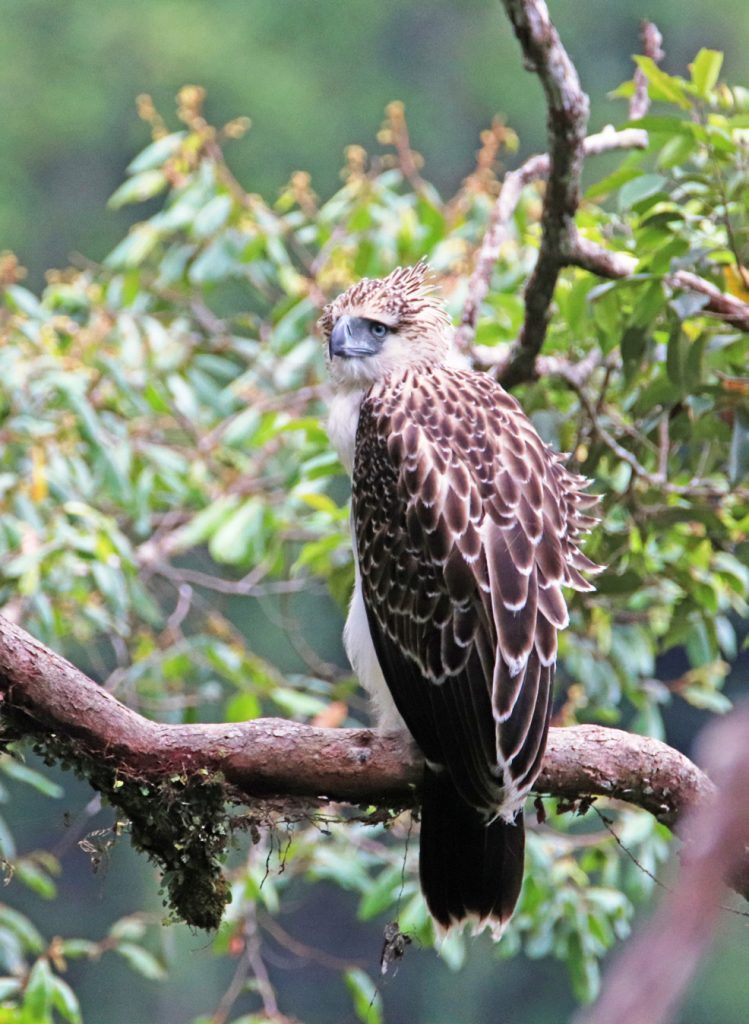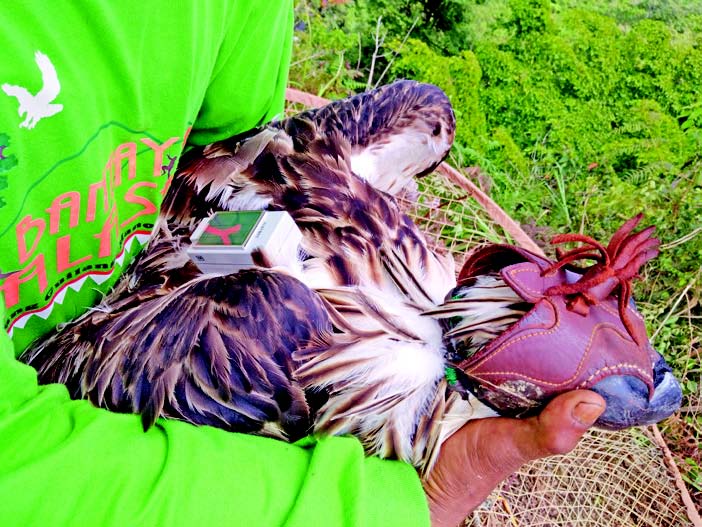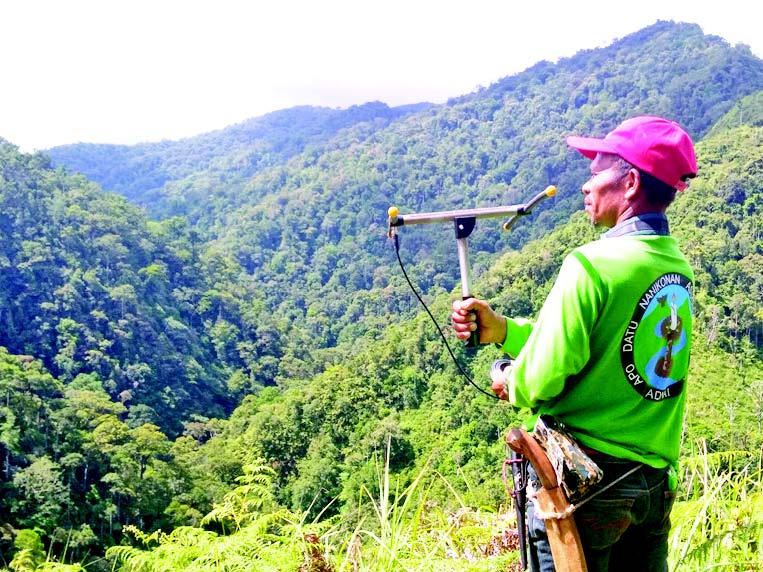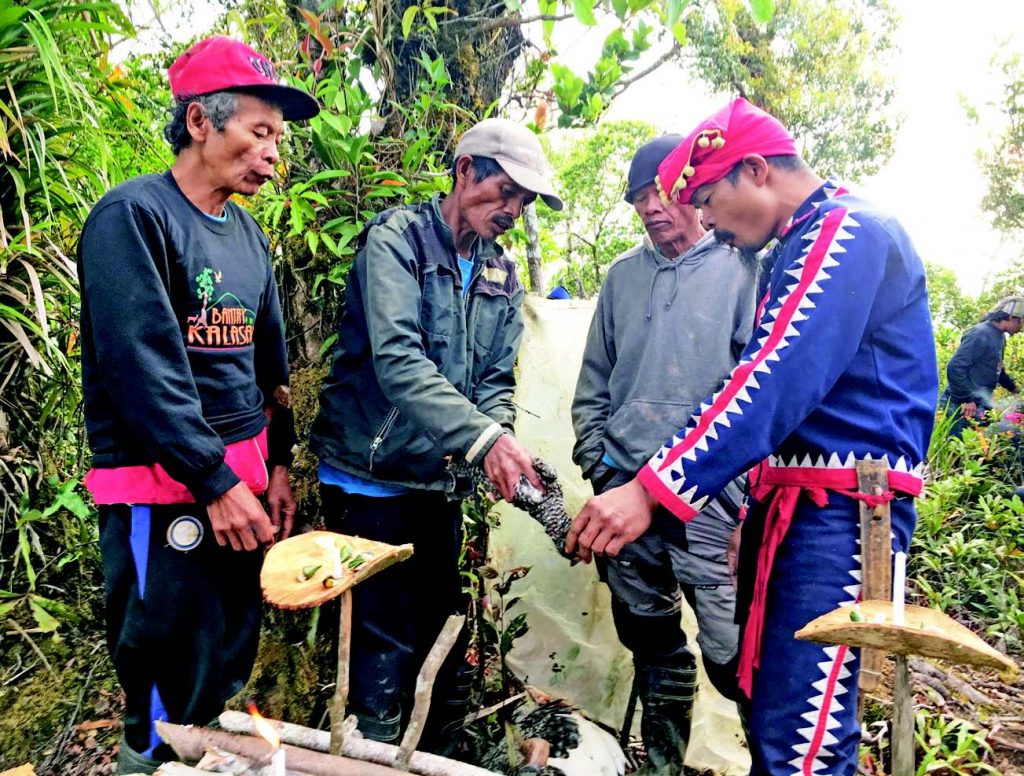People and beasts alike face misfortunes in their lives. But crisis can also lead to opportunities and positive change. And in the face of crises, helping hands emerge.
Meet eagle Kalabugao, one of perhaps less than 800 adult birds remaining of the “critically endangered” Philippine eagle, Pithecopaga jefferyi, the Philippines’ national bird. She is a healthy, fully independent, female eagle who is now rearing her first born in the mountains of Bukidnon.
Flying through hard times
Life was not so good for Kalabugao nine years ago. Barely a year old then, she was trapped by a local farmer who kept her as a helpless pet. When the Philippine Eagle Foundation (PEF) and environment officials rescued her, she was a sickly, malnourished eaglet tethered on one leg to a piece of log surrounded by her own feces.

After a year of medication, care, and rehabilitation at the Philippine Eagle Center in Davao City, she recovered and was ready for the wild. In October 2009, she was released in the protected forests of Mt. Kitanglad Range Natural Park.

A GPS transmitter was harnessed to her back, allowing field workers to follow her tracks. Like many immature eagles with no mate and territory yet, she wandered outside of the protected area and into hostile human landscapes. Luckily, forests along deep ravines provided food and safe passage. Acting as her guardians, PEF field crew also kept her away from human harm by telling villages ahead of her path to spare the bird from shooting and hunting.

Keeping a close watch on Kalabugao was a prudent strategy. Six years after crossing over to a new-found territory at Mt. Tago, she paired with male eagle Guilang-guilang and laid her first egg. But like many new breeders in the wild, her first nesting attempt failed. The egg did not hatch.

In 2017, the pair was in their usual courtship rituals again, and the renewed pair bond resulted in another nesting. After two months of full-time incubation by Kalabugao, matched by faithful food rations from Guilang-guilang, the eagle pair finally hatched their first young.

Since then, this milestone became the world’s first case of a rescued, rehabilitated, and released juvenile Philippine eagle surviving to sexual maturity and breeding in the wild, proving that human wrongdoings could be corrected, and that we should not give up on people.
Fledgling friendship
Coincidentally, the local villagers who lent their helping hands also found second chances in their relationship with outsiders.
The indigenous tribe Higaonon of Manolo Fortich town in Bukidnon are the traditional owners of Kalabugao’s forest territory. When PEF Biologists traced Kalabugao to the Higaonon’s ancestral forests, we took the next logical step: seek the indigenous forest owners’ consent and help with protecting the eagles, who share the forest territory with them.

But the leaders of the Apo Datu Nanikunan Association, Inc. (ADNAI), the organization holding native title to the forests, had trust issues with non-indigenous outsiders. They were generally wary of some lowlanders who in the past acted on bad faith abused and took advantage of them. We then had to slowly build and earn their respect and trust.


Fortunately, a partnership began in 2016 through a community-based conservation project funded by the London-based charity Whitley Fund for Nature. The collaboration brought clear community benefits such as skill development, rural livelihood support, cultural rejuvenation, and the expansion of their network of development partners. Feelings of indifference were slowly replaced by a sense of trust and friendship, not only with our group, but also with other partners who extended help.

Spread the wings of conservation
As part of their growing network, ADNAI in 2018 hosted the UK-based Silverback Films that filmed eagles Kalabugao, Guilang-guilang, and Maluko (eaglet) in the wild. The video footage is now part of the monumental Netflix natural history documentary Our Planet, narrated by renowned British naturalist Sir David Attenborough. Silverback, in turn, provided forest patrol funds and field gears to the ADNAI’s Bantay Kalasan (forest guards).
In March 2019, Manolo Fortich held its first Banog-banog (Eagle) Aerial, Arts, and Music Festival, and funds were raised to help support ADNAI with their conservation work. The DENR also deputized over 20 Bantay Kalasan as government environment officers.
Now, ADNAI and its Bantay Kalasan continue tracking Kalabugao through her GPS transmitter, enforcing forestry laws, apprehending timber poachers, and educating other village members about conserving the eagle family and their forest home.
On March 22, ADNAI held their annual thanksgiving which they have been traditionally performing in seclusion and secrecy since the olden times. As an obvious gesture of good faith to its newfound partners, the day-long ritual was held with their non-indigenous partners as guests.
As the elders sanctified their food as thanksgiving offerings, they called upon their principal deity Magbabaya, and their local prophet and savior Apo Datu Nanikunan, and prayed for the well-being of their Philippine eagle neighbors and their indigenous and non-indigenous human guardians.
Related stories:
– Philippine eagle rescued from a trap in Samar
– 7 Philippine eagle pairs display signs of breeding
– The Philippine serpent eagle






